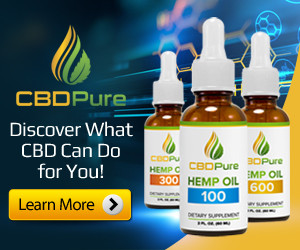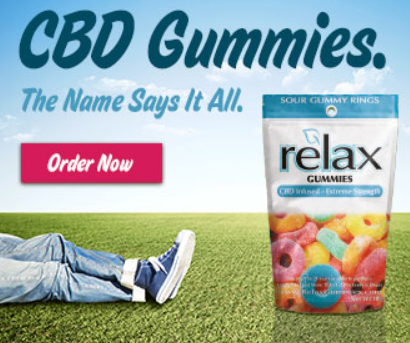- Jeanne Gray
CBD 101 - A Detailed Look Into CBD Oil
A Grassroots Movement Sweeps America

If you have visited a water cooler lately, you’ve probably heard of cannabidiol, or CBD, one of the most promising yet politically controversial natural compounds on earth. As of this writing, 29 of America’s states have legalized medical cannabis, with nine more allowing recreational use as well.
File:Medical cannabis + CBD United States map 2.svg
Despite its federal prohibition, medical marijuana (“MMJ”) holds out hope for many with debilitating diseases. In a context of rampant opioid addiction, cannabis’ non-psychoactive components like CBD have naturally garnered national attention.
Cannabis newcomers rightly question the therapeutic use of this compound derived from a drug that has for decades been used primarily for fun, vilified by our government for unscientific, political reasons.
What Exactly is CBD?
Scientists have isolated over 480 different compounds in cannabis sativa, including 113 cannabinoids. Cannabidiol (CBD), is one of the most predominant in naturally occurring cannabis. Because it is not psychoactive, nor addictive,* CBD holds tremendous therapeutic potential for a broad range of ailments.
In its natural form, cannabidiol exists alongside several dozen other antioxidant-rich cannabinoids, including psychoactive tetrahydrocannabinol (THC). CBD and THC work together to balance and enhance each other’s effects.(1)
As Martin Lee of ProjectCBD.org explains, “CBD can also mitigate adverse effects caused by too much THC such as anxiety and rapid heartbeat. When both compounds are present in sufficient amounts in the same cannabis strain or product, CBD will lower the ceiling on the THC high while prolonging its duration.” Some users describe feeling alert and clear using CBD, rather than “stoned.” For this reason, CBD presents as an ideal daytime therapy for many chronic conditions.
Which is better: a CBD isolate, or CBD in medical marijuana?
CBD is “pleiotropic”—that is, having “many effects through multiple molecular pathways.” In their natural state cannabinoids work with the plant’s aromatic terpenes to give each cannabis strain its particular flavor and effect profile, in a synergistic “entourage effect.”(2)
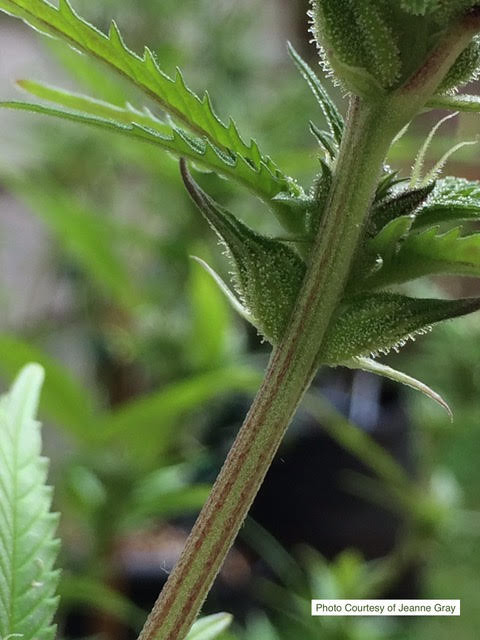
Recognizing the sum is greater than its parts, companies that isolate CBD oil have begun re-introducing terpenes to enhance the flavor of the medicine. “Cannaseurs” recommend using a whole plant extract of a cannabis strain with both THC and CBD rather than extracting either component, just to add it back in.
What Does CBD Do to You?
CBD acts indirectly upon the body’s Endocannabinoid (Endogenous+Cannabinoid) System, a group of receptors found throughout the body. CBD impacts the neurotransmitter anandamide, which governs the activity of dopamine and serotonin. Cannabidiol helps anandamide manage both dopamine and serotonin(3) two potent chemicals that keep your whole system balanced: moving fluidly, reacting appropriately, focusing on tasks that need your attention, enjoying life. Clinical data support that CBD not only relieves pain, inflammation and nausea, but also can effectively quell anxiety,(4) balance mood and relieve depression.(5) Who knew we were created with such built-in self-regulatory design?
Is CBD Safe?
In short, yes. Many pharmaceuticals commonly prescribed for pain, anxiety, depression, medical cannabis have a narrow “therapeutic window,” meaning they effectively treat a condition at a given dose, but taking more can harm or kill you. Chronic use of everyday treatments like aspirin, acetaminophen and non steroidal anti-inflammatories (nSAIDS) like Motrin® is known to cause severe liver damage. CBD, on the other hand, is one of nature’s safest medicines, with no known toxic limit. Unlike other regulated “drugs of choice” like alcohol and tobacco, no one has died from a cannabis overdose.
In 2012 researchers from Kings College in London concluded CBD is safe even in high doses: “In healthy volunteers, THC has marked acute behavioral and physiological effects (such as increased heart rate and sedation), whereas CBD has proven to be safe and well tolerated.”(6) told, CBD is considerably safer than any other chemical humans use to treat disease and promote health.
One Benefit of the U.S. “War on Drugs”
The War on Drugs that President Reagan started in the 1980s ironically drew attention to the curative potential of cannabis. The scientists tasked with debunking CBD’s usefulness proceeded to document its efficacy. So much so, that in 1999 the Department of Health and Human Services (DHHS), a U.S. government agency, filed for a patent on “Cannabinoids As Antioxidants and Neuroprotectants.”(7) Patent #6630507, awarded in 2003, lauded the therapeutic value of cannabinoids for “treatment and prophylaxis (prevention) of a wide variety of oxidation associated diseases, such as ischemic, age-related, inflammatory and autoimmune diseases….” Furthermore, the researchers noted that “cannabinoids…have particular application as neuroprotectants…limiting neurological damage following… stroke and trauma, or in the treatment of neurodegenerative diseases, such as Alzheimer’s… Parkinson’s disease, and HIV dementia.”
How Did Cannabis Shift from A Mind-Altering Recreational Drug to Medicine?
Cannabis has been used for several millennia, with the oldest “written record on cannabis use” from a Chinese emperor in 2727 B.C.
Historically, cannabis sativa held more CBD, and was used frequently in folk medicine for its anti-nausea and anti-inflammatory benefits. Following the drug-experimental subculture of the 1960s, however, marijuana growers of northern California began breeding strains with higher THC content, for recreational use.
In an area that came to be known as the “breadbasket” of American pot, cannabis flourished and grew more potent in THC, while its CBD content was largely overlooked. 1960s and 1970s weed averaged 4% THC, but modern strains average 12% THC by dry weight, due to selective breeding.
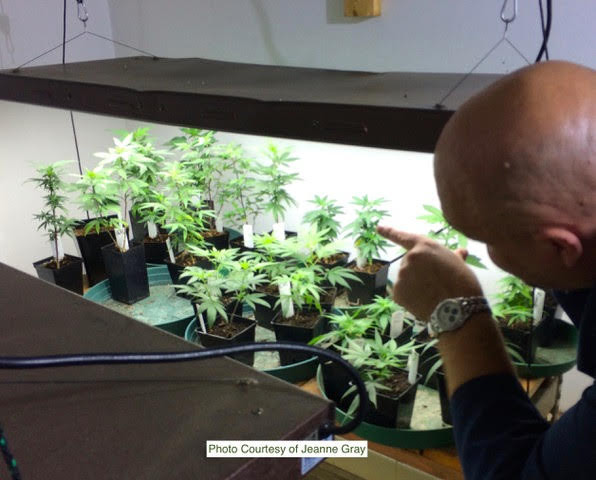
Thankfully, after California legalized medical marijuana use in 1996, scientists from several area labs proceeded to analyze the cannabinoid content of thousands of strain samples submitted by medical dispensaries.
In 2009 they serendipitously came across a strain that still contained significant CBD. At this crucial juncture, they proceeded to clone that strain.
In short order, scientists from several “medical” states began breeding CBD-rich strains, ushering in a new era of cannabis therapeutics featuring CBD in a starring role.
Mainstream Media Take Note
Celebrities further propelled medical cannabis into the limelight of national awareness. Talk show host Montel Williams, diagnosed with multiple sclerosis in 1999, uses marijuana to treat chronic neuralgic pain.(8)
CNN’s top medical correspondent, neurosurgeon Sanjay Gupta long doubted CBD’s therapeutic validity, but in 2013 recanted his earlier views after producing the Netflix film “Weed.” To his credit, Gupta apologizes for his earlier stance:
…I mistakenly believed the Drug Enforcement Agency listed marijuana as a schedule 1 substance because of sound scientific proof. Surely, they must have quality reasoning as to why marijuana is in the category of the most dangerous drugs that have "no accepted medicinal use and a high potential for abuse.” [Yet] They didn't have the science to support that claim, and I now know that when it comes to marijuana neither of those [claims is] true. It doesn't have a high potential for abuse, and there are very legitimate medical applications. In fact, sometimes marijuana is the only thing that works.(9)
More and more families like Charlotte’s have become “cannabis refugees,” (10) relocating to cannabis-friendly states with an established infrastructure like Colorado for access to CBD-rich medical marijuana. Cannabidiol has been found safe and effective even at high doses, yet without the numerous deleterious side effects of conventional pharmaceuticals.
Certainly any parent who has watched his child suffer would circle the globe to get the help she needs.Which Conditions Can Be Treated with CBD?
Research into CBD’s medical applications is burgeoning. Cannabidiol can relieve symptoms without the notorious side effects of traditional treatments for chronic pain, PTSD, multiple sclerosis, epilepsy, social anxiety, depression, acne, cachexia (“wasting syndrome”) and more. (11)
How Do I “Take” CBD? Cannabidiol can be extracted from cannabis, and administered by numerous routes. Certainly marijuana can be smoked, but for equally rapid onset, vaporizing works well without the carcinogens of combustion. While vaping works quickly, cannabis entrepreneurs are developing novel ways of taking cannabis. CBD can be distilled into concentrates or tinctures, taken as drops sublingually (under the tongue), applied to the skin, sprayed in the mouth, discretely inhaled with a nebulizer (as one would treat asthma), or used in suppository form. (12) CBD can also be infused into butter
(“cannabutter”) then baked into edibles, dissolved into beverages, or infused into other mediums like olive oil, shea butter or coconut oil.
Medicated edibles, or “medibles” have come a long way from the “pot brownie” of yesteryear. Bear in mind that taken orally, cannabinoids take 30-45 to “kick in” and effects can last several hours. Never drive while medicated with a psychoactive strain.
Tips for Sourcing CBD and Medical Marijuana
Whenever a promising natural therapy takes stage, so do con artists, preying on the unsuspecting. See your medical marijuana doctor and buy a CBD-rich product that includes THC and terpenes. For dosing and usage guidance, Dr. Martin Lee [https://www.ncbi.nlm.nih.gov/pubmed/22716148] proposes: “…the goal is to self-administer consistent, measurable doses of a CBD-rich remedy that includes as much THC as a person is comfortable with.” (13) This author suggests keeping a medication diary to track your particular dosage and effect, as medical marijuana is highly personalized therapy.
As with the food you ingest, the closer you can get to the plant’s original form, the better. If you live in a state that allows home growing, you may even try juicing the raw leaves for a potent shot of antioxidants and other phytonutrients, but that is a story for another day.
In general, verify that the CBD:
is pure, with no additives other than the carrier oil
has been third-party tested by an independent lab
is organic (and tested for mold, fungicides and pesticides)
is sourced from cannabis grown in the United States
does not require a subscription or “30-day trial”
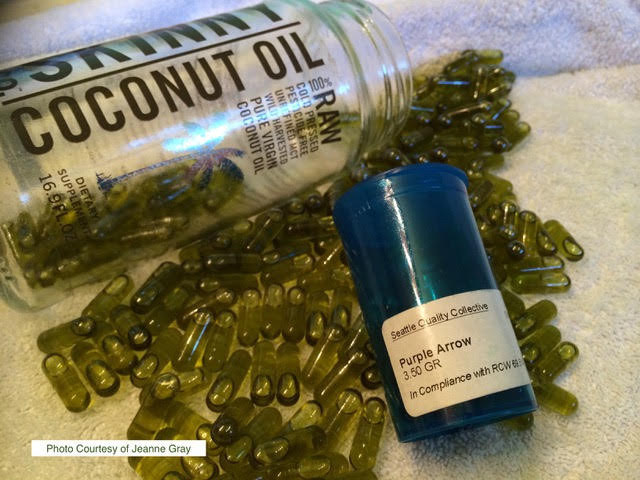
Beware of CBD products sourced from imported industrial hemp, In China, Italy and around Chernobyl, for example, hemp has been used for phytoremediation, or removing toxic chemicals from the soil. Colorado State University researchers report that hemp effectively removes cadmium, dioxin and cesium from contaminated soil.13
Industrial hemp is bred for its fibrous stalks. More of its CBD is concentrated in the leaves, the same area where heavy metals accumulate. Thus, if a patient with compromised immunity uses tainted CBD oil from such “filtering" hemp, he will encounter a double challenge—not getting the sought effect, and potentially exposing himself to toxic pollutants, which could pose a life-threatening scenario. This caution is not meant to deter you from trying CBD if your doctor recommends it, but to urge you to use common sense, especially if purchasing online.
Cannabinoids, especially CBD, offer patients a broader and more natural range of treatment options, affording them a sense of ownership in their healing. As adults we need not abdicate the responsibility of our well-being to another, however trained or well-funded he or his establishment is. As Americans who espouse pursuing life and liberty, patients need to know the truth—pros and cons—about their medicines. Only then can they make informed choices about their health, and their very lives.
*Author’s Note:
Most adults can relate to psychological dependence on a chemical like the caffeine in their morning coffee. Addiction, however (as defined by the American Psychological Associations DSM-5), involves physical reliance and increased tolerance for a chemical. The most commonly prescribed pain and anxiety relievers, while effective short-term, are highly addictive.
#cbd #cbdoil #cbdeffects #cbdoilbenefits #cbdhempoil #cbddoctors #cbdoileffects #purecbdoil #cannabinoids #cbdconcentrates
